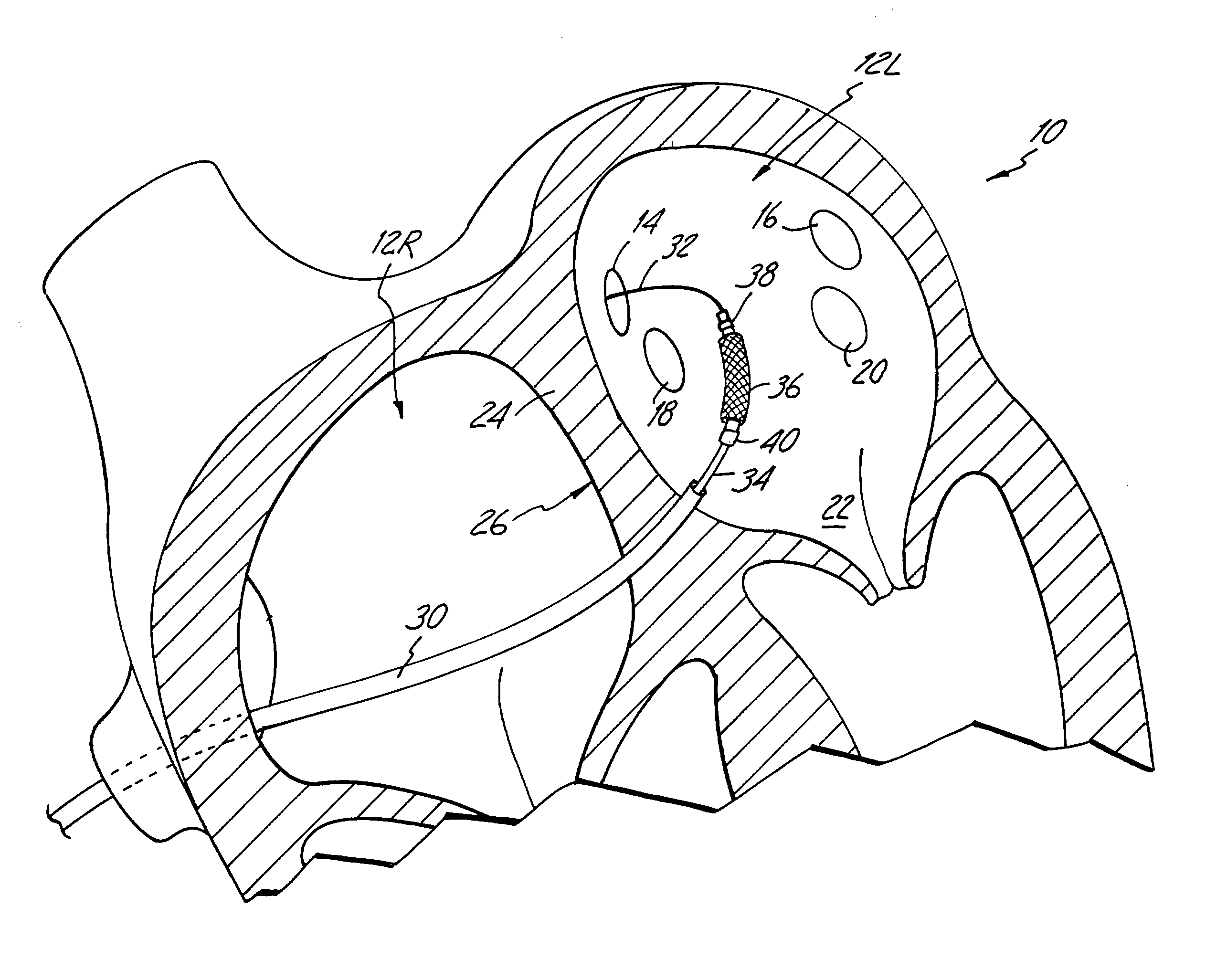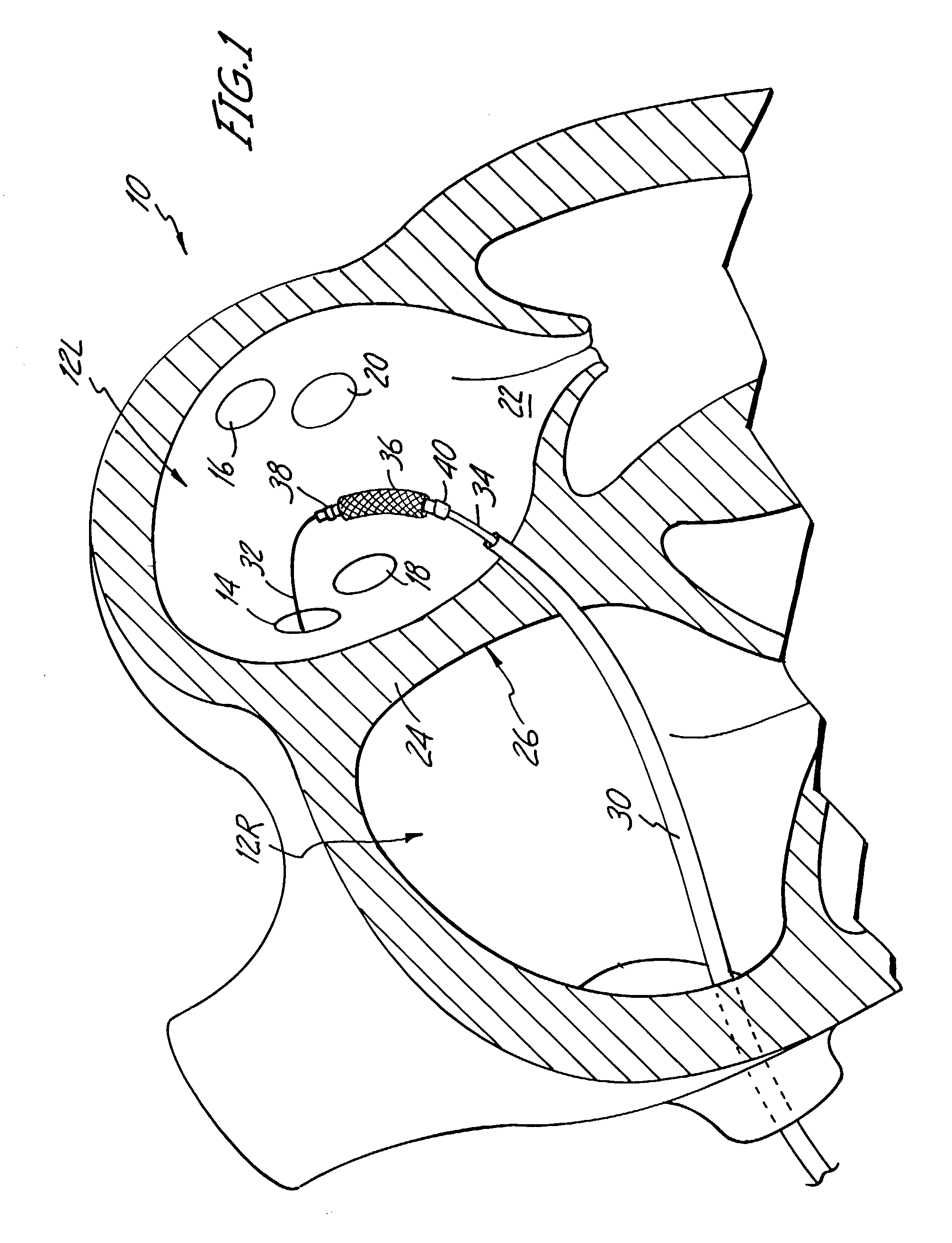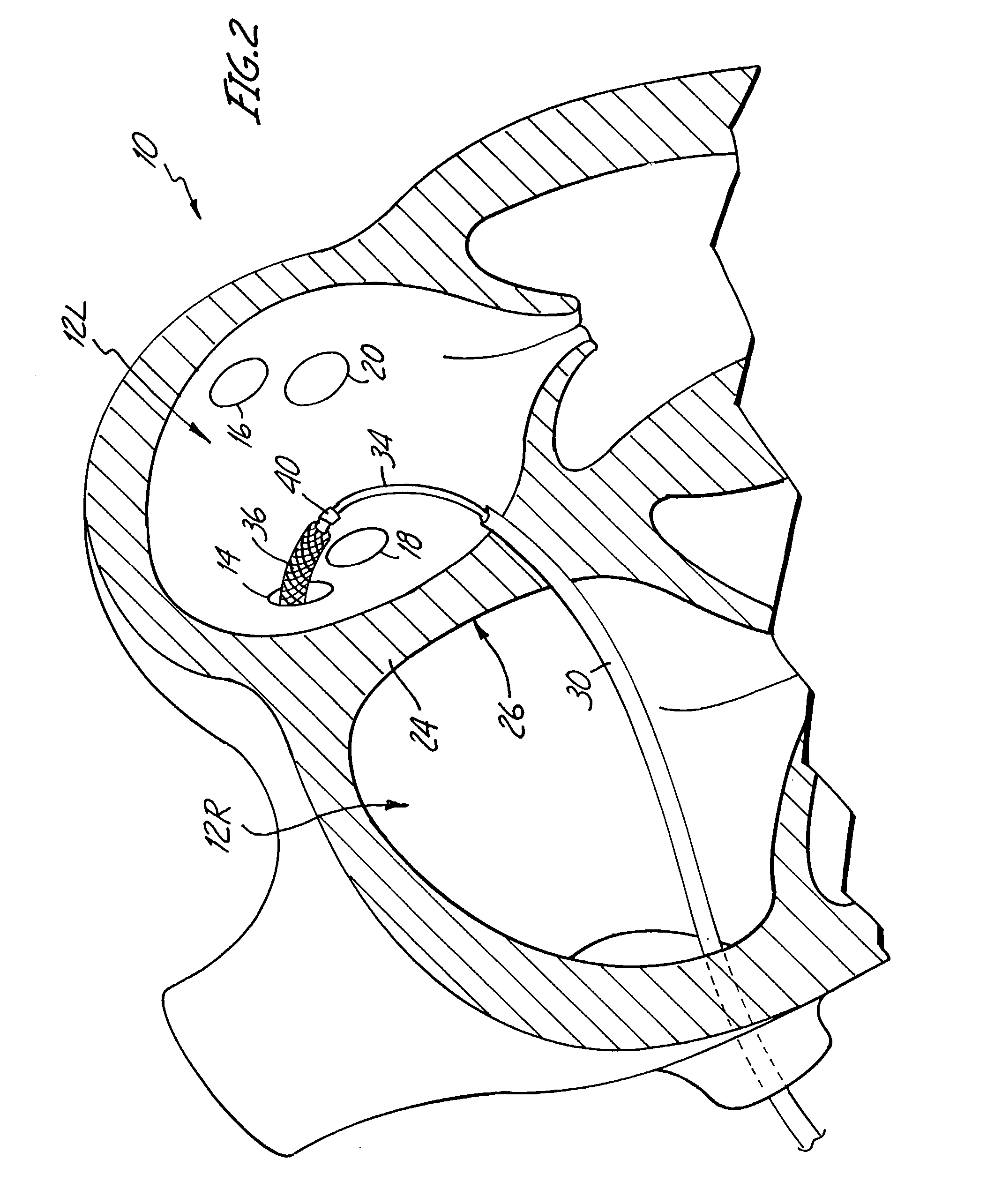Atrial fibrillation therapy with pulmonary vein support
a technology of pulmonary veins and atrial fibrillation, which is applied in the direction of prosthesis, therapy, blood vessels, etc., can solve the problems of atria not pumping blood efficiently to fill the ventricles, a variety of chronic and undesirable conditions, and a rapid and disorganized contraction of individual muscle fibers, so as to prevent stenosis of the pulmonary vein and inhibit the electrophysiologic conduction properties
- Summary
- Abstract
- Description
- Claims
- Application Information
AI Technical Summary
Benefits of technology
Problems solved by technology
Method used
Image
Examples
Embodiment Construction
[0029]The human heart includes two upper chambers called the left atrium and right atrium, and two lower chambers called the left ventricle and right ventricle. FIG. 1 shows a sectional schematic view of a portion of heart 10 in which a catheter based ablation treatment is being performed to treat atrial fibrillation. Shown in FIG. 1 are left atrium 12, right superior pulmonary vein 14, left superior pulmonary vein 16, right inferior pulmonary vein 18, and left inferior pulmonary vein 20. Also shown in FIG. 1 are mitral valve 22, atrial septum 24, and fossa ovalis 26.
[0030]The present invention is a catheter-based ablation therapy in which conductive pathways in pulmonary veins 14, 16, 18, and 20 are destroyed in order to electrically isolate sources of unwanted electrical impulses (arrhythmiatic foci) located in the pulmonary veins. By either destroying the arrhythmiatic foci, or electrically isolating them from the left atrium, the initiation of paroxysmal atrial fibrillation can ...
PUM
| Property | Measurement | Unit |
|---|---|---|
| Force | aaaaa | aaaaa |
| Diameter | aaaaa | aaaaa |
| Ablation enthalpy | aaaaa | aaaaa |
Abstract
Description
Claims
Application Information
 Login to View More
Login to View More - R&D
- Intellectual Property
- Life Sciences
- Materials
- Tech Scout
- Unparalleled Data Quality
- Higher Quality Content
- 60% Fewer Hallucinations
Browse by: Latest US Patents, China's latest patents, Technical Efficacy Thesaurus, Application Domain, Technology Topic, Popular Technical Reports.
© 2025 PatSnap. All rights reserved.Legal|Privacy policy|Modern Slavery Act Transparency Statement|Sitemap|About US| Contact US: help@patsnap.com



